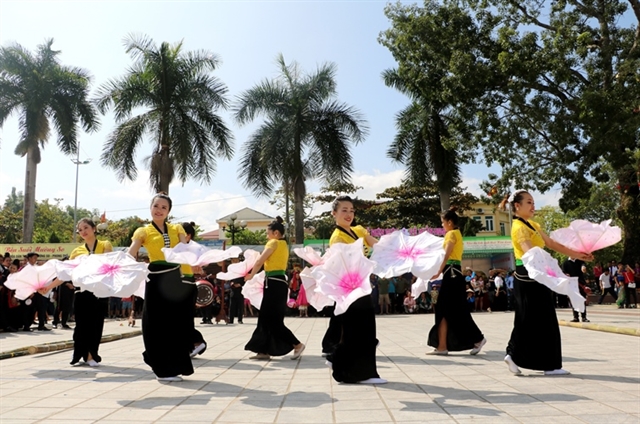 Life & Style
Life & Style

The unique folk dance of Việt Nam’s Thái ethnic minority, called Xòe Thái is being considered for UNESCO recognition as an intangible cultural heritage of humanity.
HÀ NỘI — The unique folk dance of Việt Nam’s Thái ethnic minority, called Xòe Thái is being considered for UNESCO recognition as an intangible cultural heritage of humanity.
The consideration was taken during the 16th session of UNESCO with the participation of representatives from many countries on Monday.
Representatives of Việt Nam’s Ministry of Culture, Sports and Tourism, the Ministry of Foreign Affairs, together with authorities of four northern mountainous provinces Yên Bái, Lai Châu, Sơn La and Điện Biên, which are home to the dance, took part in the online meeting.
Xòe Thái is popular among the Thái ethnic groups living in the four northern mountainous provinces. Especially, the communes of Mường Lò in Yên Bái, Mường So in Lai Châu, Thuận Châu in Sơn La, Mường Lay and Điện Biên Phủ City in Điện Biên are considered “centres” of the dance.

|
| At the opening ceremony of the Mường Lò Culture and Tourism Festival in Yên Bái Province in September 2019, 5,000 people gathered to perform the folk dance, setting a Guinness World Record. — Photo vov.vn |
Xòe is a unique type of traditional dance that is associated with community cultural festivals, ritual ceremonies, or cultural exchanges.
It depicts the daily lives of the Thái in Việt Nam and shows their desire for a peaceful and prosperous life.
Comprising about 30 different dances in total, Xòe Thái is usually performed during community cultural festivals, funerals and cultural exchanges.
The dance has been protected, developed and handed down through generations over hundreds of years in various forms including xòe quạt (dance with a fan), xòe khăn (dance with a scarf), xòe nón (dance with a conical hat) and others, with contents reflecting community activities and expressing the Thai people’s emotions and ancestral spirits.

|
| Xòe Thái dance is popular among Thái ethnic groups living in four northern mountainous provinces Yên Bái, Lai Châu, Sơn La and Điện Biên. — Photo dienbien.gov.vn |
With gentle rhythms, dancers usually form a circle around a bonefire and move to the sound of melodic traditional music.
The dance not only presents the beauty of Thái ethnic culture, but also the connection between community members.
Today, Xòe Thái is a symbol of hospitality of the Thái in the northwest of Việt Nam.
The lissome, elegant dance was named on the Government’s intangible heritage list in 2013,
In September 2019, at the opening ceremony of the Mường Lò Culture and Tourism Festival in Yên Bái Province, 5,000 people gathered to perform the dance, setting a Guinness World Record.
The UNESCO title is expected to elevate the status of the dance to national and international levels, thus promoting Vietnamese traditional art and cultural diversity.
UNESCO’s current session is considering 48 profiles for the recognition of Intangible Cultural Heritage of Humanity, and six profiles for the Intangible Cultural Heritage In Need of Urgent Safeguarding. — VNS




